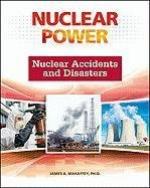|
This section contains 833 words (approx. 3 pages at 300 words per page) |

|
In the United States the irradiation industry treats mostly medical products, household products such as bandages and baby pacifiers, and a few foods, particularly spices. Other countries such as China and South Africa now irradiate a wider range of foods. The irradiation industry in the United States has been actively seeking to expand its market by processing more foods and other products. Since 1986 the Food and Drug Administration and the Department of Agriculture have approved the use of irradiation on fruits and vegetables, wheat flour, poultry, and meat. Many consumers have resisted the technology as inappropriate, or even hazardous, for foods. After the anthrax scare in early 2002, the U.S. government began to irradiate mail bound for Congress and federal agencies at postal facilities outside of Washington, so mail may soon join food as potential selling points for the irradiation industry.
Irradiation Facility Foul-Ups
Worldwide there...
|
This section contains 833 words (approx. 3 pages at 300 words per page) |

|




